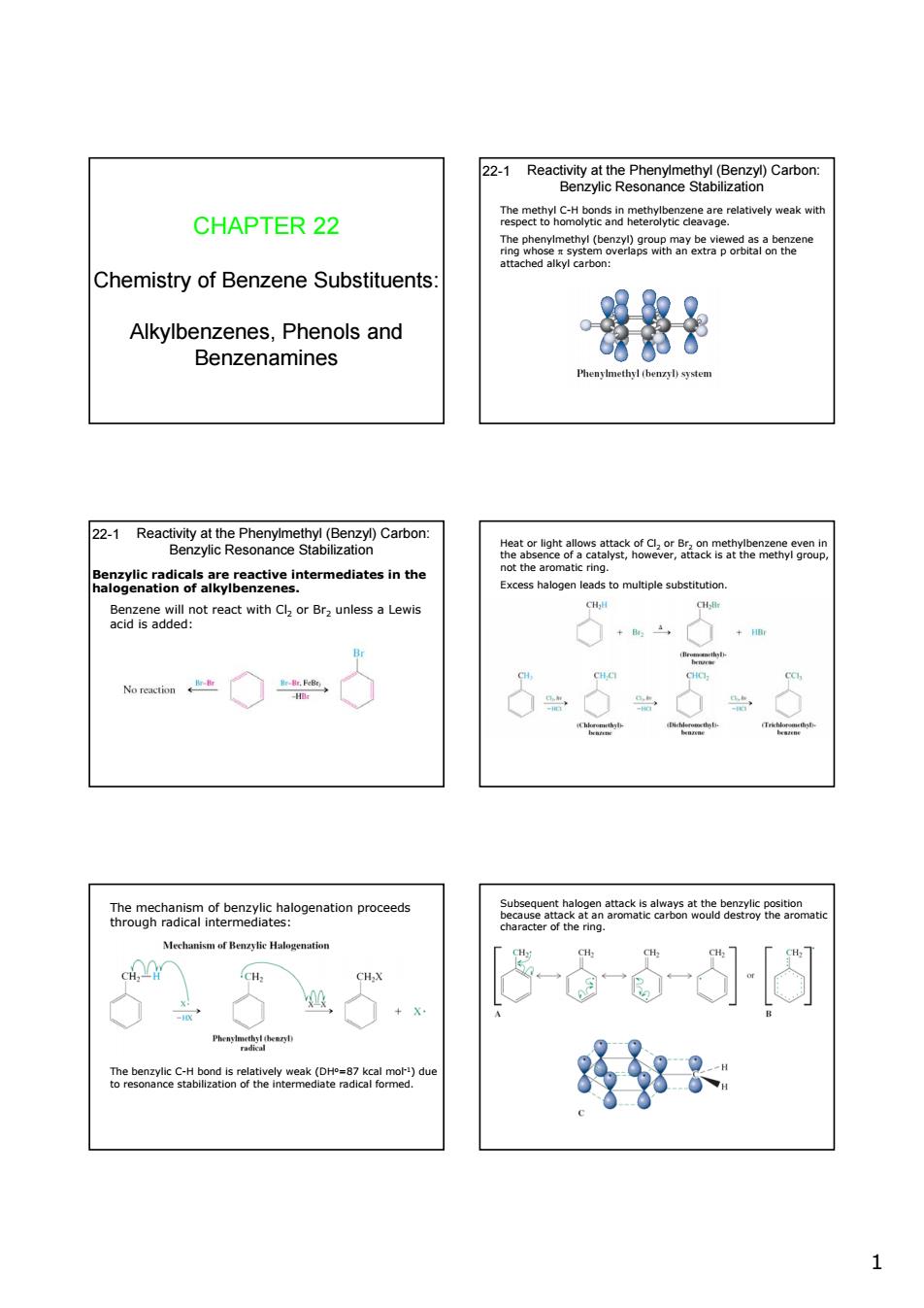正在加载图片...

CHAPTER 22 TtptoSek3mg8easvagmateyweakw 62 Chemistry of Benzene Substituents Alkylbenzenes,Phenols and 得路子 Benzenamines 22-1 Reac arbon. Rsiog0oatninenteantermediatesinthe omutiplesubstitutor +m wew性◇学◇ hegfhneneanaiebemeYlsaogen3tonpoces 的 8-d-6--[周 Te nnrelatively()du 1 CHAPTER 22 Chemistry of Benzene Substituents: Alkylbenzenes, Phenols and Benzenamines Reactivity at the Phenylmethyl (Benzyl) Carbon: Benzylic Resonance Stabilization 22-1 The methyl C-H bonds in methylbenzene are relatively weak with respect to homolytic and heterolytic cleavage. The phenylmethyl (benzyl) group may be viewed as a benzene ring whose π system overlaps with an extra p orbital on the attached alkyl carbon: Reactivity at the Phenylmethyl (Benzyl) Carbon: Benzylic Resonance Stabilization 22-1 Benzylic radicals are reactive intermediates in the halogenation of alkylbenzenes. Benzene will not react with Cl2 or Br2 unless a Lewis acid is added: Heat or light allows attack of Cl2 or Br2 on methylbenzene even in the absence of a catalyst, however, attack is at the methyl group, not the aromatic ring. Excess halogen leads to multiple substitution. The mechanism of benzylic halogenation proceeds through radical intermediates: The benzylic C-H bond is relatively weak (DHo=87 kcal mol-1) due to resonance stabilization of the intermediate radical formed. Subsequent halogen attack is always at the benzylic position because attack at an aromatic carbon would destroy the aromatic character of the ring